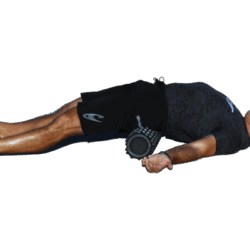| Passive Stretch: a passive position you hold for a long period of time (typically 2-5 minutes or more) to allow muscle tissue to lengthen beyond its functional capacity so as to encourage the growth of additional sarcomeres within each muscle involved to allow greater ROM and ease of movement.
Active Stretch: an active position you hold for a short period of time (typically 1-10 seconds) to lengthen and retrain muscles to more effectively coordinate across a joint and allow for improved movement patterns, especially when each muscle is at its full-range functional length. Functional Movement: a constant motion movement you slowly practice to train muscles to more effectively coordinate across a joint and allow for improved movement patterns, especially when each muscle is at its full-range functional length. |
2 thoughts on “Stretches & Functional Movements”
Leave a Reply
You must be logged in to post a comment.




Need some help with rehabing a high hamstring strain…that really seems more like a piriformis issue. Can you direct me to the best stretches for this and advise on how many to do, how long to hold them and how long to back off of the running and weights routine…
Thanks,
Perry
Perry, first and foremost you should check with a qualified healthcare professional to get a proper diagnosis. If you have something other than tight muscles back there you just might make your issue worse.
Once you’ve been cleared for self-care exercise and stretches, then I strongly suggest you do the he Wall Piriformis Stretch, the “Figure Four” Stretch, and the the Sitting Glutes Stretch, all found about halfway down on the Stretching Downloads page. You will need at least the free membership to access the page, and at least a “Fire Breather” membership to access the video downloads. Spend about 30 seconds with each leg for each stretch, then repeat one or two times for a total of 2-5 minutes of total time for any one stretch. Practice slow and methodical movements, as your muscles will respond to fast movements by tightening up and fighting any stretch. Slow = Fast when it comes to getting relief from tight muscles.
In addition you should practice several SMR exercises to address the multiple layers of tissue in your glutes and hip. Specifically, do the Piriformis Press one day and the Side Hip Rollover & Press the next, then repeat. You will likely get your best results if you combine the SMR exercises with the stretches in the same session and alternate the exact stretches and SMR exercises you do each day. Make the most influential exercises and stretches a part of your day at least 3 times a week. You’ll know which ones they are by the results you get. Smoother or great ROM and greater comfort with movement following any SMR exercise or stretch means you should do that one regularly. If you aren’t already doing the Primary & Secondary SMR exercises at least once every two weeks, then work them into your schedule. You may have hip and hamstring issues that are in part exacerbated by your hip flexors, poorly functioning quads, or other muscles that need regular attention.
Begin doing at least 2 stretches and 3 SMR exercises (1 Primary and 2 Secondary) every day. Rotate through the 20+ stretches and the 60 different SMR exercises. You might not need to regularly practice most of the 42 Extended SMR exercises, but you will surely need a few of them until your issues are resolved. Check our therapist page to locate a good sports massage professional to get hands-on help with your issue. By combining their assistance with your own “homework” it should just be a matter of time before you are back on your feet.
You should be able to continue with a mild or modified training program while you practice your stretches and SMR. Check with your therapist to get more specific recommendations pertaining to your needs.
Good luck, and keep us posted!